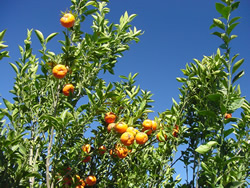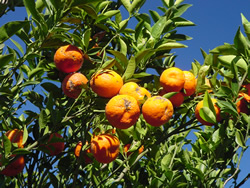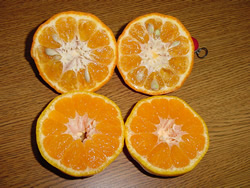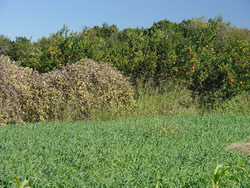Search
For The Answer
Click here to access our database of
Plant Answers
Search
For The Picture
Click here to access the Google database of plants
and insects
Information
Index
Alphabetical Listing of Topics, Recommendations
and Plants
Milberger's Nursery and Landscaping
3920 North Loop 1604 E.
San Antonio, TX 78247
210.497.3760
nursery@milbergersa.com
Open 9 to 6 Mon. through Sat.
and 10 to 5 on Sun.

Three exits east of 281, inside of 1604
Next to the Diamond Shamrock station
Please click map for more detailed map and driving directions.
CHANGSHA TANGERINE 'Changsha' tangerine is very much like the satsuma
which it resembles greatly. The fruit itself is about the size
of a satsuma, with bright orange peel. The quality is not as
good as satsuma and the fruit is very seedy. The tree is a bit
more upright-growing than satsuma and is probably more cold-hardy
than satsuma and kumquat, having been observed growing and fruiting
as far north as Ft. Worth, Texas. 'Changsha' comes true from seed and the seedlings will produce within a few years. 'Changsha', perhaps the most cold hardy of all the sweet citrus fruits. Mature satsumas and 'Changsha' tangerines can tolerate temperatures as low as 15 degrees F. or lower if they have become cold-acclimated. A sudden freeze to 25 degrees F. without any previous cold weather can be more damaging than a freeze to 20 degrees F. that comes after a period of low temperatures. Freeze damaged mandarins may lose some leaves, but they usually recover. Small trees, less than 2 or 3 years old are not as cold hardy as bearing trees. 'Changsha' has survived 4 degrees F. temperatures near Dallas, Texas. Calamondins can tolerate 15 degrees F. but 'Changsha' tangerines can tolerate 8 degrees F. or below. Changsha seedlings can also be used for rootstock on which to bud or graft satsumas as described at: http://aggie-horticulture.tamu.edu/PATIOCITRUS/propagation.html |







